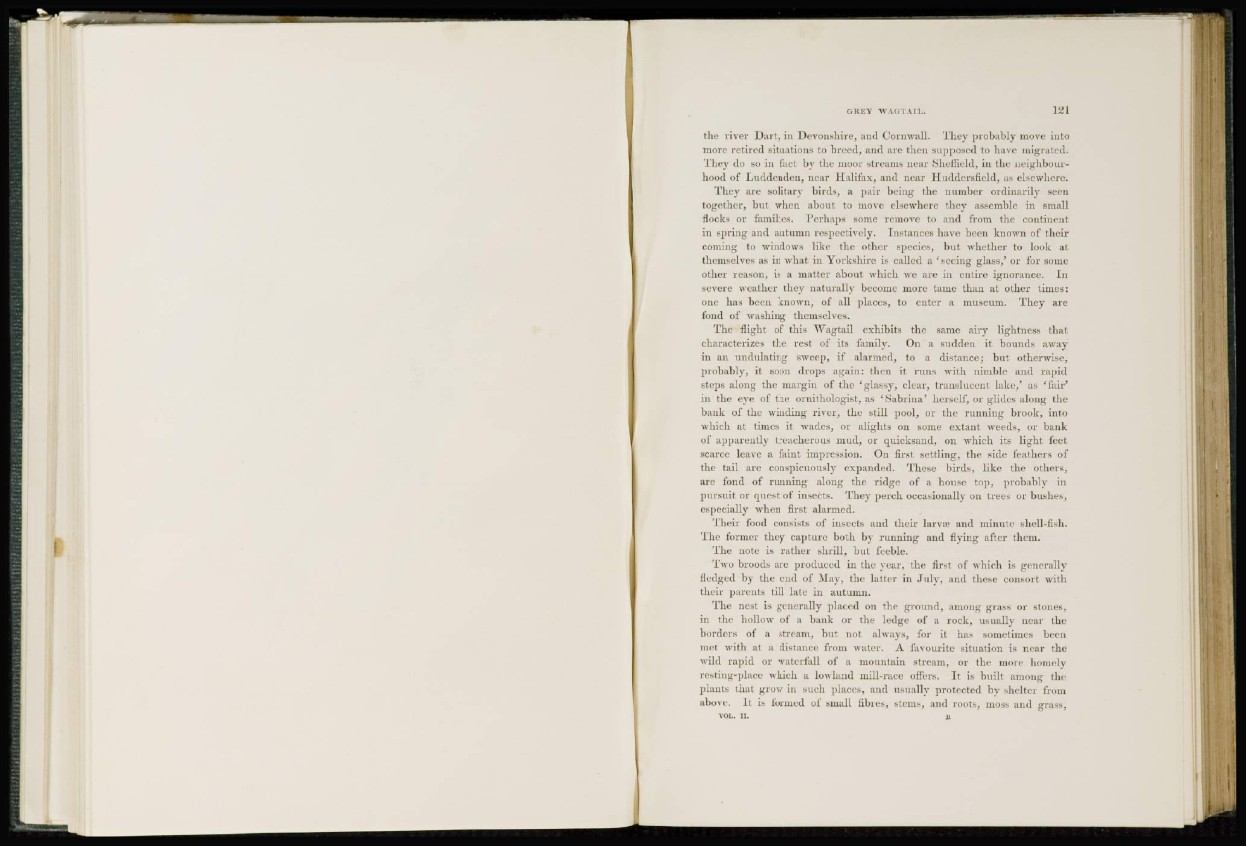
the river Dart, in Devonshire, and Cornwall. They probably move into
more retired situations to breed, and arc then supposed to have migrated.
They do so in fact by the moor streams near Sheffield, in the neighbourhood
of Luddenden, near Halifax, and near H uddersfield, as elsewhere.
They are solitary birds, a pair being the number ordinarily seen
together, but when about to move elsewhere they assemble in small
flocks or families. Perhaps some remove to and from the continent
in spring and autumn respectively. Instances have been known of their
coming to windows like the other species, but whether to look at
themselves as in what, in Yorkshire is called a 'seeing glass/ or for some
other reason, is a matter about which we are in entire ignorance. In
severe weather they naturally become more tame than at other times:
one has been known, of all places, to enter a museum. They are
fond of washing themselves.
The flight of this Wagtail exhibits the same airy lightness that
characterizes the rest of its family. On a sudden it bounds away
in an undulating sweep, if alarmed^ to a distance; but otherwise,
probably, it soon drops again: then it runs with nimble and rapid
steps along the margin of the 'glassy, clear, translucent lake,' as 'fair'
in the eye of the ornithologist, as 'Sabrina' herself, or glides along the
bank of the winding river, the still pool, or the running brook, into
which at times it wades, or alights on some extant weeds, or bank
of apparently treacherous mud, or quicksand, on which its light feet
scarce leave a faint impression. On first settling, the side feathers of
the tail are conspicuously expanded. These birds, like the others,
are fond of running along the ridge of a house top, probably in
pursuit or quest of insects. They perch occasionally on trees or bushes,
especially when first alarmed.
Their food consists of insects and their larva? and minute shell-fish.
The former they capture both by running and flying after them.
The note is rather shrill, but feeble.
Two broods are produced in the year, the first of which is generally
fledged by the end of May, the latter in July, and these consort with
their parents till late in autumn.
The nest is generally placed on the ground, among grass or stones,
in the hollow of a bank or the ledge of a rock, usually near the
borders of a stream, but not always, for it has sometimes been
met with at a distance from water. A favourite situation is near the
wild rapid or waterfall of a mountain stream, or the more homely
resting-place -which a lowland mill-race offers. It is built among the
plants that grow in such places, and usually protected by shelter from
above. It is formed of small fibres, stems, and roots, moss and grass,